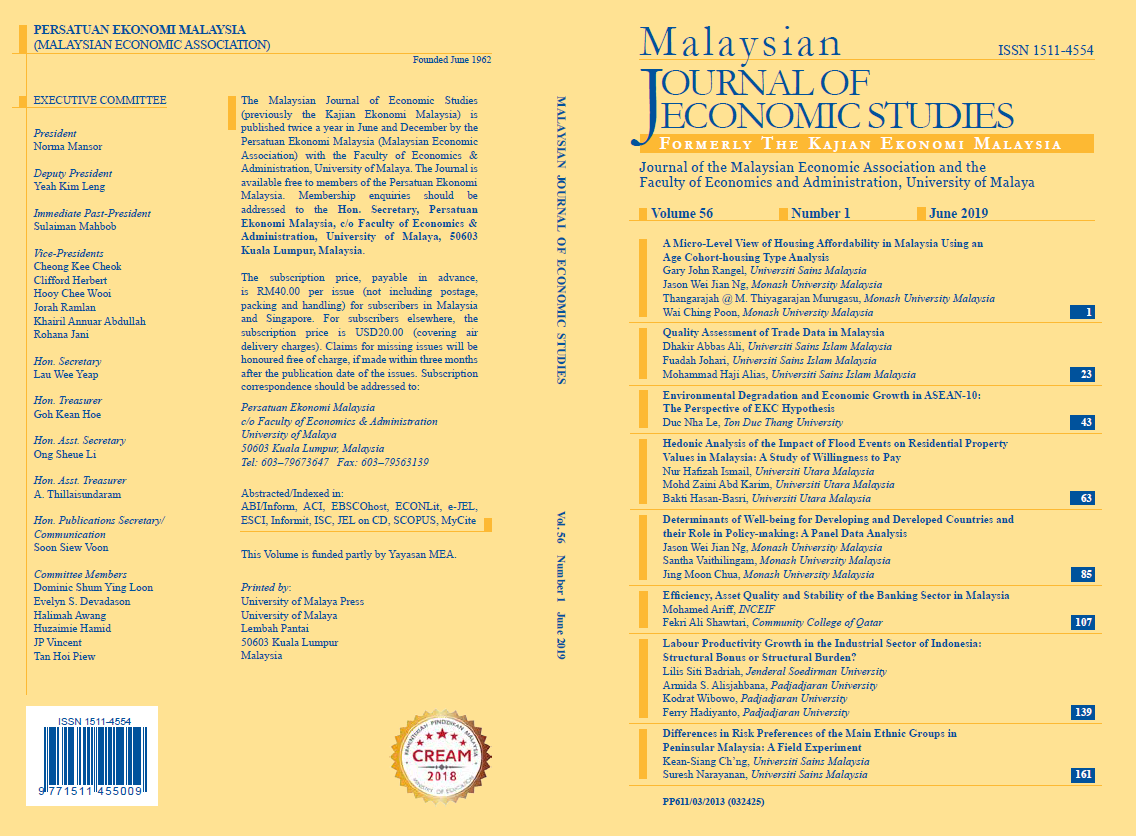Environmental Degradation and Economic Growth in ASEAN-10: The Perspective of EKC Hypothesis
DOI:
https://doi.org/10.22452/MJES.vol56no1.3Keywords:
ASEAN-10, carbon emission, economic growth, EKC hypothesisAbstract
Environmental issues have been ranked among the most intense debates over the past decades by governments around the world. Sustainable development goals have been top priorities in the working agenda of national cabinets and administrations which questions the chronic trade-off between environment and economic performance. This paper aims at contributing further insights into the above-mentioned linkage to the contemporary literature by testing the validity of the environmental Kuznets curve (EKC) hypothesis. By conducting a panel data analysis on ASEAN-10 countries’ statistics of carbon dioxide emissions per capita (COEpc), real gross domestic product per capita (rGDPpc), foreign direct investment inflow (FDIif), trade openness index (TOI), and urbanisation (URB), the findings have empirically confirmed the valid causality running from economic growth, international trade and demographic changes to environmental degradation. Additionally, the existence of an earlier inverted U-shaped and a later N-shaped EKC has been investigated and significantly confirmed the cyclical changes of the eco-enviro trade-off. Also, this paper provides implications for policymakers to consider the cost-benefit issue in the establishment and implementation of economic and environmental protection policies.

